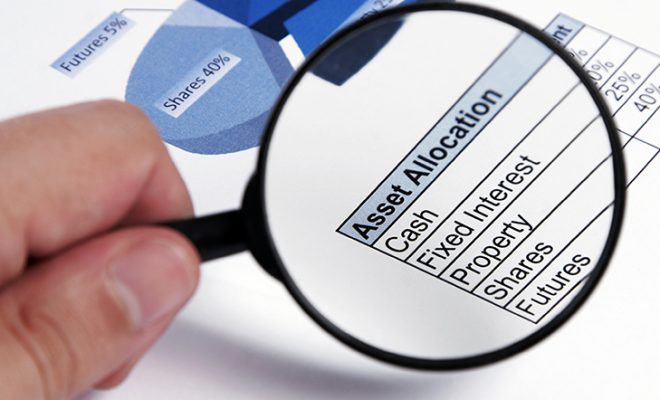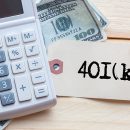7 Underutilized Retirement Plan Benefits That Can Improve Your Financial Wellness

In America, defined contribution plans such as a 401(k) plan, an IRA (Individual Retirement Account), etc. are considered the primary source of financial security for retirement years. People depend on these employer-sponsored retirement plans to help maintain their future standards of living. According to the latest findings of the U.S. Department of Labour, there are more than 100 million participants in defined plans. Out of this, 80 million people are actively contributing to their employer-sponsored plans, including a 401(k) account. Yet the figures for retirement preparedness are not significant. Essentially, planners are not able to maximize their benefits from such plans, which impacts their financial wellness in the long-term.
Here are 7 underutilized retirement plan benefits, which can help boost the financial wellness of planners:
- Expert Guidance and Complementary Tools
An advantage that is commonly offered by employers but remains to be the most underused by employees is expert retirement guidance. Most employers provide their employees with an opportunity to get a free consultation from highly qualified retirement professionals. This can help employees analyse their financial wellbeing, savings rate, contribution appropriateness, and more. Typically, these counsellors provide free one-to-one consultation based on the financial situation of the person. Additionally, companies also give complimentary advanced online tools, which can be leveraged by employees to assess how much they need to save for an adequately funded retirement. These tools can easily be linked to online retirement savings accounts. They process information and work algorithms to provide the required results. To avail of these benefits, employees only need to reach out to the company’s Human Resource (HR) Department and enquire about these tools and other no-cost guidance programs. That said, these are not the only privileges offered by employers. Employees can benefit from several other similar initiatives. Hence, it is advisable to consult the HR department for any updates in this field. - Account Contribution Escalator
A highly neglected and useful feature of retirement plans is the contribution rate escalator. This tool is offered by the retirement plan provider and allows a person to automatically increase their contributions consistently each year. The main advantage of this tool is that employees can increase their share without pinching their budget significantly. Moreover, the tool allows the contributor to set a target percentage, upon which, each year’s increase is managed.
For example, if the ideal contribution for an employee is 15% of their income, but the current share is only 5%, there is a gap of 10%, which needs to be bridged for an effective retirement cover. But a 10% difference would imply increasing the present share by three times over. That will severely impact the budget. This scenario can be managed with the help of an account contribution escalator. The tool can be adjusted to automatically increase the annual savings rate by 1% until the target of 10% is achieved. So, the next year the contribution would be 6%, then 7%, and so on. This helps build the account balance faster and without many monetary sacrifices. - Asset Allocation Mechanism
Along with automating the contribution percentage, individuals can also preset their asset allocation strategies. The asset allocation mechanism of retirement plans allows sponsors to define their allocation preferences in advance. It can schedule their strategies as per their risk tolerance or a specific target date. This feature can enable investors to have a diversified portfolio across asset classes. Such as, a person who is nearing retirement can choose to automatically distribute funds into assets that have a lower risk appeal, like bonds. On the other hand, a planner who is young with a subsequent gap in retirement can choose high-risk assets, such as equity. Target-date funds used in retirement planning are also an efficient asset allocation fund. These are managed with a specific mix of asset classes that change the risk tolerance as per the life stage. Alternatively, the asset allocation mechanism can be used to select holdings with specific maturity dates. For example, if a person is planning to retire in another 10 years, they can prefix the tool to select only those assets that have maturity post 10 years. - Automatic Rebalancing
This feature is ideal for investors that are picky about their fund selection. And wish to be the sole decision-maker when it comes to their assets. So, if the person wants to keep a standard 60:40 ratio of equity and bonds, the retirement account can be configured in the same way. The automatic rebalancing would need the investor to define a percentage (in this case, 60% in equity and 40% in bonds) for each holding. This needs to be done along with a frequency at which the funds must be auto balanced. Then at the given interval, the platform will adjust (buy and sell) the allocation to maintain the intended percentages. - Self-directed Brokerage Account
Self-brokerage accounts can be accessed through a brokerage window offered by 401(k) plans. But as per reports, only 20% of employers offer this feature, and even fewer of them advertise it. This aspect is best suited for people who have the required market knowledge and can pull off investment accounts on their own. Generally, employer-sponsored plans, such as the 401(k) account, only allow investments in specific accounts approved by the 401(k) account administrator. These may not be the ideal match as per the employee’s preferences. But by opting for a self-directed 401(k) plan, the investor can access a variety of additional funds. These include individual stocks, bonds, options, and more. However, this feature should be accessed only with precaution. - Net Unrealized Appreciation (NUA)
Some companies allow employees to own a small percentage of shares in the firm. This bestows the employees with a sense of ownership. But the feature is available only through a 401(k) account. Investors can buy employer stocks and benefit when the distributions from the retirement accounts are made. Generally, retirement account distributions are considered as ordinary income. This is taxed higher than capital gains in the long-term. But through the NUA feature of 401(k) accounts, individuals can get a favourable capital gain tax rate upon distribution. NUA is the appreciation in the employer shares (the difference between the original cost and current market value). However, it is wise to only make contributions up to 15% in the employer stocks. - After-Tax Contributions
Even though this feature of 401(k) accounts is not very popular, it has some significant advantages. By this feature, the investor can save even after exhausting the maximum contribution limits of retirement plans. Money earned from after-tax contributions is accounted as pre-tax. It is permitted to grow tax-deferred until withdrawn. Moreover, these can be converted into a Roth IRA, which can become tax-free post 5 years or at the age of 59.5 years. But taxes on earnings need to be paid upon conversion, which is comparatively lower. Even if the existing plan does not allow conversion to a Roth account, it can be done outside the employer’s scheme.
To Sum it Up
If all the above-underused features of a retirement plan are utilized to their true capability, an investor can help build significant wealth over time. However, each aspect should be considered after careful evaluation and analysis of all pros and cons. Expert guidance from professional Financial Advisors can also help investors make the maximum of their 401(k) accounts, which is a principal retirement saving vehicle.










